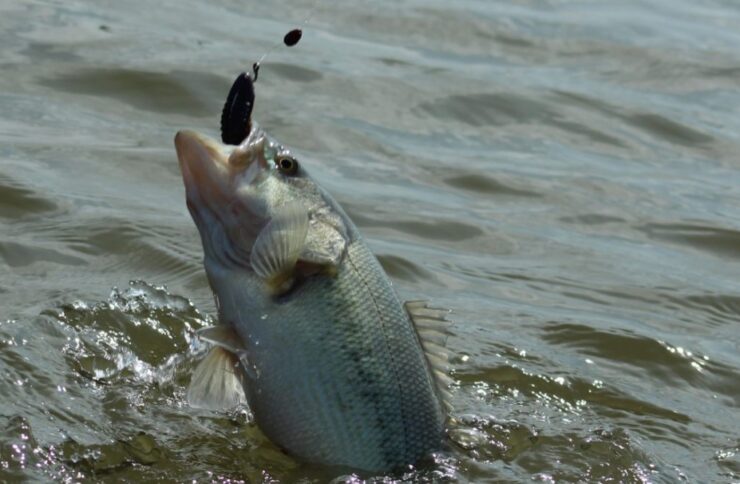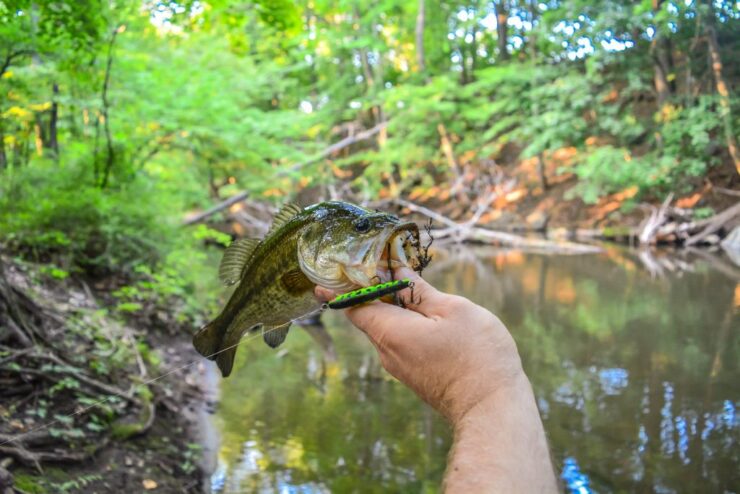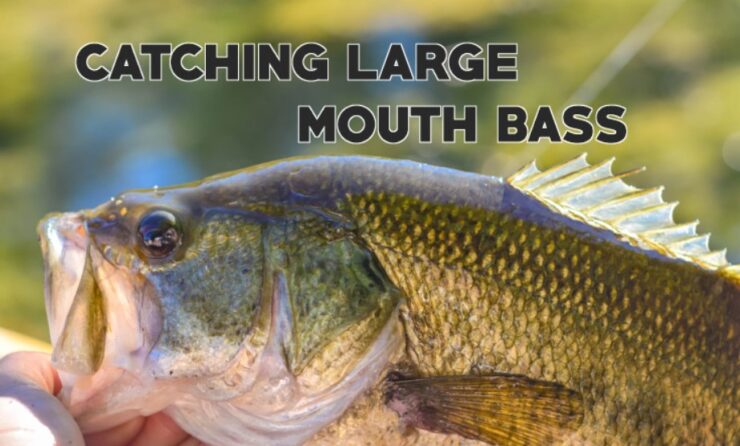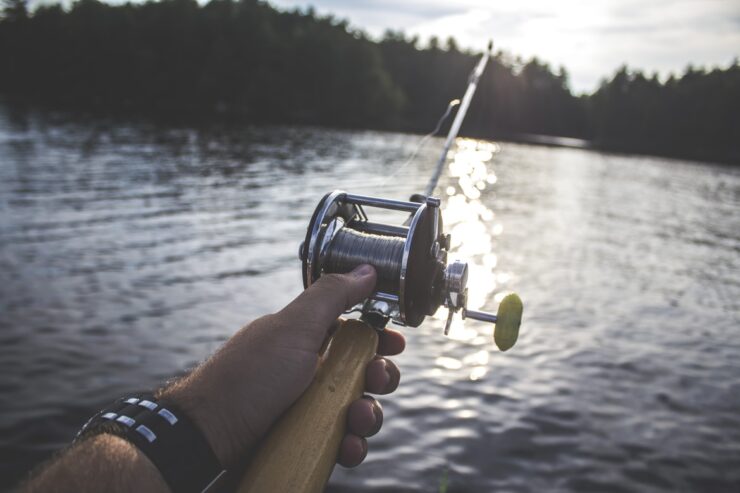Largemouth Bass are one of the most popular game-fish in America. More money is spent on equipment, baits, tournaments, and lures for large-mouth bass than any other fish in the US, including trout. Indeed, there are large numbers of hard-core anglers who fish for nothing else. There is such a large amount of equipment and lures available that a beginner could feel overwhelmed by the myriad of choices.
The good news is that large-mouth bass fishing can be as simple, or complicated as you want, or can fit into your budget. You can catch large-mouth bass from now on with nothing more than a homemade cane pole, a few hooks, a few sinkers, maybe a bobber, and a worm, minnow, insect, or a jig.
Or, you can take out several mortgages on your home, and buy a specialty tournament Bass Boat equipped with enough electronics to hunt down enemy submarines, and amenities to allow you to almost live in the boat on a semi-permanent basis.
Table of Contents
ToggleThe Dirty Tricks to Kick Bass

To be a successful bass fisherman, knowledge and technique are more important than the actual equipment or bait. One of the attributes that make bass so popular is that, unlike a lot of other game-fish, they are seldom that picky on what they eat. They are happy to engulf anything that looks like it might fit into their bucket-mouth if they don’t have to work too hard for it.
They are one of the most opportunistic feeders in freshwater, and cannot resist anything that appears like a free mouthful. So the trick is just to get the bait to them and trigger their feeding instinct. To this end, there are 5 tricks that will increase your chances of success, no matter what equipment you use.
For this article, I am going to assume you are using a standard medium-action rod and a medium bait-casting reel with an 8-pound test line. This is just a standard freshwater all-around rig. You can easily modify these techniques to work with whatever rig you wish to use.
The Crippled Minnow
Bass cannot resist a chance to attack a minnow that appears injured. Part of a predator’s job is to weed out the weak and injured individuals, making the whole species stronger. Bass take this responsibility seriously and are very diligent in performing their duties.
To this end, the next time you rig a minnow, take an extra moment to make the minnow a bit more irresistible. Using a pair of fingernail clippers, nip a small piece of lower tail-fin off of the minnow. This will make it swim very erratically, and will drive bass over the edge.
The Apex Predator Con

One thing no self-respecting bass (or any other game-fish, for that matter) can ignore is the idea that another fish, especially a smaller one, may steal a meal that rightfully belongs to it. It has a lot to do with feeding instinct but also plays upon the basses homicidal obsession to defend its territory from interlopers. To play upon this weakness in the piscatorial personality, you need two rigs.
On the first rod, rig a hook under a slip sinker and a bobber, clip the tail-fin on a minnow and rig it on the hook. Cast this rig out, place the rod in a rod holder and grab the other rig.
While watching the first rig, tie on a crank-bait, or spinner lure. Now, cast this rig out beyond the bobber on the first one, and reel it in quickly, dragging it as close to the bobber as possible without snagging it. To a watching bass, it appears that a smaller fish is attacking the minnow, and is about to steal the basses lunch.
Strikes are vicious, and it is not uncommon to get fish on both rigs simultaneously, meaning you will have your hands full. Be sure to check local regulations to be sure this method is legal before trying it. Some places only allow the use of one rod at a time for fishing.
The Pinhead Trick
When fishing with plastic worms, sometimes it is a problem keeping the worm head from slipping over the hook-eye and sliding up the line. This is especially problematic when using a Carolina Rig.
The best way to remedy this is to take an old guitar string (whichever one is small enough to go through the hook-eye) and use it as a pin. Slide the worm head slightly over the hook eye, and stick the end of the guitar string through the plastic, and through the hook-eye. Cut the ends of the guitar string off as close to the worm head as possible. Now, the worm will never shift, no matter how hard you cast it.
The Glass Menagerie
Here is a trick that is guaranteed to congregate bass (and crappie) to your fishing area if there are any around at all. You need a glass jar and lid, and some small diameter rope. Punch a lot of holes in the top of the jar lid. Now, fill it with lake water and place 6-12 minnows in it. Screw the lid on tight, and tie the rope around the jar (or through the lid) so you can lower it into the water.
Now, just drop it into the water near where you are fishing, and fish as normal, near the jar. The minnow’s scent goes into the water through the holes in the jar lid, and bass can see a seemingly unsuspecting school of minnows congregating. This will draw in bass from quite a distance.
The Tanenbaum Trick
After Christmas, offer to collect all of your neighbor’s old Christmas trees and dispose of them. Now, take them to your favorite fishing spot and sink them in the water in a likely spot. This will provide more habitat and cover for baitfish, bass, and crappie. You can weigh them down with rocks, cheap used weight-lifting weight discs, old barbells. cinder blocks, etc.
Be sure to check local regulations to be sure this is legal in your area, but it’s been my experience that most DNRs do not object to more habitat. They may even suggest good places for you to set them. Now, just remember where you set them and fish there often.
Meet Maria Alexander, the fearless adventurer steering the ship at KayakPaddling.net. Her mission? To convince you that life’s too short for dry land and that the best stories always start with “So there I was in my kayak…”
Related Posts:
- Heavy Duty Fishing: 11 Best Rods And Reels For Big Fish 2024
- 16 Best Kayak For Beginners 2024 - Kayaking Adventure Gear
- 12 Best Fishing Lures Ever 2024 - Baits That…
- 12 Best Beach Wagons & Carts 2024 - For All-Terrain
- 10 Best Inflatable Kayak 2024 - Rivers, Lakes & Open Seas
- 10 Best Fish Finders Under $200 2024 - Top Affordable Picks













